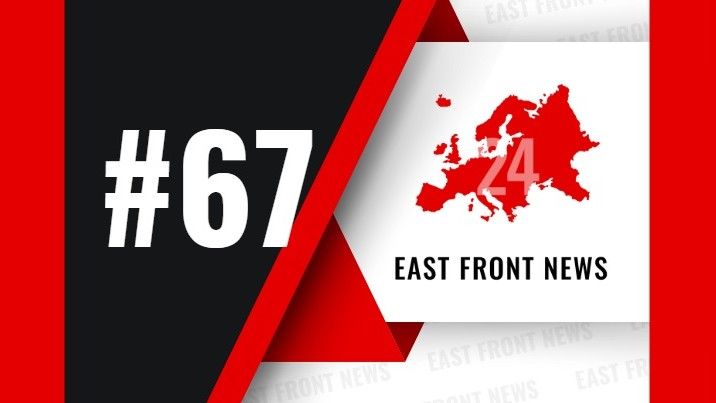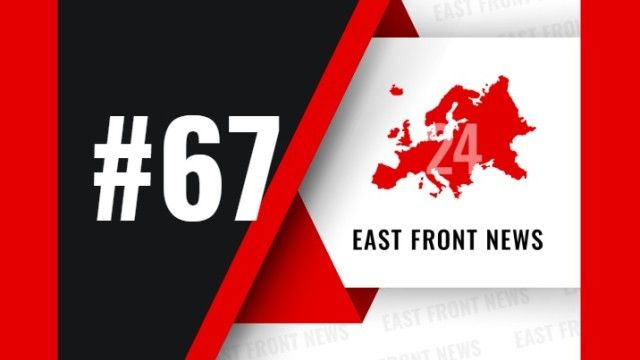
Photo. Defence24
Copy link
Send email
East Front News is a weekly newsletter summarizing the past week’s most important events concerning security and the situation in the Central and Eastern Europe region. It includes original opinions and comments, along with key news items significant from a Polish perspective. If you would like to receive this newsletter, please sign up by clicking HERE .
Belarus between Washington and Moscow
America’s renewed dialogue with Minsk and Russia’s tightening control over Belarus have revived the long-standing „Belarus dilemma”: whether isolation or cautious engagement better serves regional stability and Belarusian sovereignty. After years of Western sanctions and repression cycles, the new U.S. administration has shifted course, seeking limited normalization with Alyaksandr Lukashenko’s regime. A series of prisoner releases, diplomatic visits, and even a direct call between Donald Trump and Lukashenko marked the first thaw in years. Washington’s pragmatism—driven by its broader attempt to manage relations with Moscow—has surprised the EU, whose member states have so far maintained a policy of isolating Minsk while supporting the democratic opposition. The resulting divergence exposes transatlantic cracks: the U.S. now experiments with selective engagement, while Europe continues to prioritize values-based containment.
For Brussels, Warsaw, and the Baltic capitals, this shift poses a strategic test. Limited re-engagement could reduce Belarus’s dependency on Russia and open channels for dialogue on hybrid threats, border tensions, and human rights. Yet it also risks legitimizing a dictatorship and undermining the exiled opposition. The key variable remains how much autonomy Lukashenko still wields under Kremlin pressure. Poland, long a proponent of isolation, must now decide whether to maintain that stance or cautiously test engagement under strict conditions. The U.S. move suggests that Belarus, despite its deep subordination to Moscow, may again become a geopolitical swing state. For the West, shaping that future—beyond Lukashenko and beyond isolation—will soon be essential.
Author: Aleksander Olech, PhD
Budapest will be the venue for the meeting between Trump and Putin
Donald Trump announced on social media that his last phone conversation with Vladimir Putin was productive. The Russian leader congratulated him on bringing peace to the Middle East. The US president emphasized that this success would accelerate the end of the war in Ukraine.
The US leader added that he and Putin discussed the restoration of trade relations between Russia and the United States after the conclusion of the truce. The next talks between the leaders are to take place in the Hungarian capital, Budapest.
The Speaker of the Duma calls for the “protection of Russians” in the Baltic states
State Duma Speaker Vyacheslav Volodin called on Russia to take action to “protect the Russian minority from humiliation and persecution in the Baltic states.” He added that Moscow must do everything in its power to “protect its citizens.”
This statement referred to Latvia’s decision to deport more than 800 Russians who failed the Latvian language exam. According to the amendments to immigration law adopted by Latvia, Russians had to apply for EU permanent resident status by June 30 and pass a Latvian language test at the A2 level.
However, this is not a narrative that has only just emerged. It should be remembered that Russia already made similar demands in relation to Georgia in 2008 and Ukraine in 2014 and 2022. Comments in the same vein were also made about Moldova, where forces favoring closer ties with Western countries recently won the elections. The Latvian authorities dismissed Volodin’s statement as “typical Russian propaganda aimed at escalating tensions.” Russian commentators, such as Leonid Slutsky, leader of the Liberal Democratic Party of Russia, reinforced the narrative by claiming that Russians in the Baltic states are part of the “Russian world.”
Author: Wojciech Kozioł
Breakthrough in EU negotiations opens the way for the Polish defence industry
The agreement of October 16, 2025, on the regulation launching the European Defence Industry Programme, worth 1.5 billion euros for the years 2025–2027, removes the risk of excluding Polish manufacturers by introducing a 35 per cent limit on the share of components from outside the European Union and the European Economic Area. This solution enables the qualification of projects that use imported components and ensures greater stability in planning investments in production capacities. The earlier proposal to introduce a 70 per cent threshold was rejected, as it would have prevented support for some Polish defence programs, including the Krab self-propelled howitzer, which contains more than 30 per cent of components from abroad. The new program includes joint procurement, strengthening of the industrial base, and a supply security
system, and will be open to EU member states, associated countries, and Ukraine. From the Polish perspective, this means greater flexibility in including national projects in the EU funding stream and the possibility of accelerating the modernisation of the defence industry, even though the scale of available funds remains moderate. The entry into force of the regulation will depend on formal approval by the Council of the European Union and a vote in the European Parliament.
Author: Justyna Smoleń
U.S. reorientation raises questions over Baltic reassurance
Reports in early September that Washington has frozen funding for the Baltic Security Initiative (BSI) and indications that the forthcoming U.S. National Defense Strategy will prioritise the Americas have prompted debate about the future American footprint in Lithuania, Latvia and Estonia. While funding under BSI (roughly $1 billion for 2021–2025) was never the sole pillar of Baltic security, the move — together with talk of a significant reduction from the ~100,000 U.S. forces in Europe — signals a shift from a permanent U.S. deterrent toward a model where America plays a supporting, rapidly deployable role. Analysts stress the change is a transformation of posture rather than an immediate withdrawal: U.S. activity in the Baltics has concentrated on interoperability, training and rotational deployments (including heavy equipment and temporary systems such as HIMARS), not large standing contingents.
For the Baltic capitals the practical consequence is clear: greater burden-sharing and enhanced NATO readiness are now imperative. Baltic and allied policymakers are already pressing for stronger, longer-term air-defence capabilities, expanded battle group capacities and resilient infrastructure for rapid reinforcement (storage, transport, fuel and exercise space). NATO’s response should emphasise scalable forces, improved C2 arrangements and implementation of commitments made at recent summits — turning plans into deployable realities so that deterrence does not depend solely on a permanently stationed U.S. presence but on credible, collective capacity across the Alliance.
Author: Michał Górski
Armored leader: Poland’s heavy support to Ukraine
Poland has emerged as one of Kyiv’s most committed defence partners, providing large-scale military and logistical assistance since the start of Russia’s full-scale invasion. According to the government’s report „Poland’s Assistance to Ukraine 2022–2023”, Warsaw has delivered 46 support packages worth over PLN 18 billion, encompassing weapons, ammunition, maintenance, and training. Between 2022 and 2024, Poland supplied 318 main battle tanks—including T-72, PT-91, and Leopard 2A4 models—along with 586 armoured vehicles, 137 artillery systems such as Krab and Gvozdika howitzers, 10 Mi-24 attack helicopters, and 10 MiG-29 fighter jets. It also transferred hundreds of MANPADS launchers, tens of millions of rounds of ammunition, and thousands of spare parts, making it one of the largest contributors of heavy weaponry to Ukraine among European nations.
Poland’s support extends well beyond direct arms deliveries. More than 90 percent of all Western military aid shipments to Ukraine transit through Polish territory, underscoring its role as a vital logistical corridor and strategic depth for Kyiv. Warsaw also hosts the headquarters of the EU’s EUMAM mission, which has already trained around 60,000 Ukrainian soldiers—four times more than initially planned—with one-third trained directly by Polish instructors. This combination of operational assistance, infrastructure, and training makes Poland a key node in the international network sustaining Ukraine’s defence. In parallel, it strengthens Poland’s own security and reinforces NATO’s eastern flank, turning Warsaw into both a frontline ally and a regional defence hub.
Author: Damian Ratka
If you would like to receive this newsletter, please sign up by clicking HERE .
East Front News is a weekly newsletter and article on Defence24.com summarizing the past week’s most important events concerning security and the situation in the Central and Eastern Europe region. It includes original opinions and comments, along with key news items significant from a Polish perspective.
